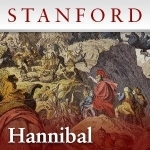Hannibal
PodcastSociety & Culture
Hannibal is a name that evoked fear among the ancient Romans for decades. His courage, cunning and intrepid march across the dangerous Alps in 218 BCE with his army and war elephants make for some of the most exciting passages found in ancient historical texts written by Polybius, Livy, and Appian. And they continue to inspire historians and archaeologists today. The mystery of his exact route is still a topic of debate, one that has consumed Patrick Hunt (Director of Stanford’s Alpine Archaeology Project) for more than a decade.
This course examines Hannibal’s childhood and his young soldierly exploits in Spain. Then it follows him over the Pyrenees and into Gaul, the Alps, Italy, and beyond, examining his victories over the Romans, his brilliance as a military strategist, and his legacy after the Punic Wars. Along the way, students will learn about archaeologists’ efforts to retrace Hannibal’s journey through the Alps and the cutting-edge methods that they are using. Hunt has been on foot over every major Alpine pass and has now determined the most probable sites where archaeological evidence can be found to help solve the mystery.
Presented by the Stanford Continuing Studies Program.
Related Items:
| Publisher | Stanford Continuing Studies Program |
| Website | http://deimos3.apple.com/WebObjects/Core.woa/Browse/itunes.stanford.edu-dz.4331563088.04331563090 |
| Language(s) | English |
Images And Data Courtesy Of: Stanford Continuing Studies Program.
This content (including text, images, videos and other media) is published and used in accordance
with Fair Use.
